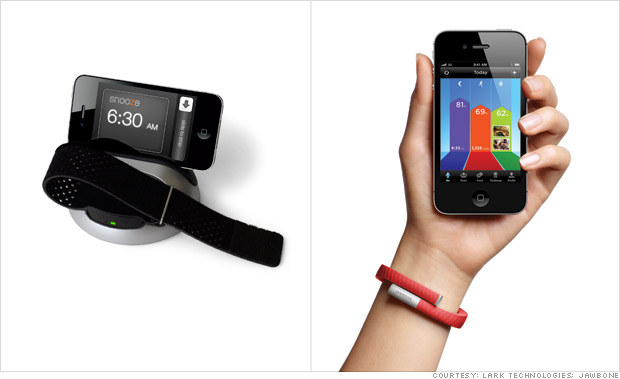
Lark's sleep monitor (left) and Jawbone's Up are computers you can wear.
Ditch the desktop and strap on your computers. Forrester thinks the future is in wearable devices -- "wearables," if you're a cool kid -- which it defines as items "worn on or near the body that sense and relay information."
Fitness companies have been the field's pioneers. Nike launched its debut wearable way back in 2006: Nike . It's a sensor that slips into a sock or shoe and transmits data about the user's run to an iPod or iPhone.
Bluetooth headset maker Jawbone has a new product in a similar vein: Up, a wristband that uses an accelerometer to track users' exercise activity. A companion app plugs the data into pretty charts for users to analyze.
The trend isn't just for sports nuts. A startup called BAM Labs focuses on healthy sleep patterns. Customers place a small "TLC" sensor under a regular mattress, and the device their tracks heart rate, breathing and movement -- touch-free.
Other potential applications are odder. Polaroid and Lady Gaga unveiled a strange wearable at last year's Consumer Electronics Show: a pair of face-swallowing sunglasses intended to capture photos and video, then display them on the glasses' LCD screens for others to see. It hasn't yet turned into an actual product.
Even weirder: Nokia recently filed for a patent on the concept of a tattoo that will vibrate with your phone.
NEXT: Mini projectors